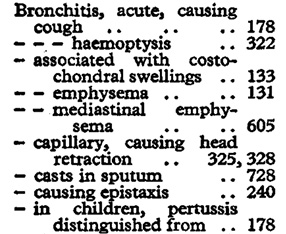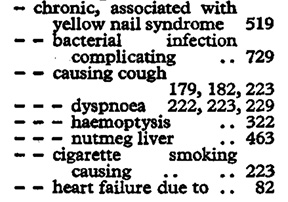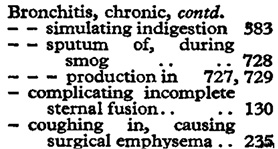Table of Contents
9. The Bond of Love
BEFORE YOU READ
- Can there be love and friendship between human beings and wild animals? Let’s read a fascinating account of an orphaned sloth bear that was rescued by the author.
- Sloth bears inhabit forested areas, including the tropical rain forests of India and grasslands at lower elevations. Sloth bears have very shaggy hair and long muzzles. Using their claws to dig, they can then use their lips to form a tube, which can go deep into the ground, or into hard-to-reach areas like dead trees for their food. Their main food is termites. You can hear them suck up their food from several feet away.

1. I WILL begin with Bruno, my wife’s pet sloth bear. I got him for her by accident.
Two years ago we were passing through the sugarcane fields near Mysore. People were driving away the wild pigs from the fields by shooting at them. Some were shot and some escaped. We thought that everything was over when suddenly a black sloth bear came out panting in the hot sun.
2. Now I will not shoot a sloth bear wantonly but, unfortunately for the poor beast, one of my companions did not feel that way about it, and promptly shot the bear on the spot.
wantonly: for no good reason
3. As we watched the fallen animal we were surprised to see that the black fur on its back moved and left the prostrate body.
prostrate: lying on the ground facing downwards
Then we saw it was a baby bear that had been riding on its mother’s back when the sudden shot had killed her. The little creature ran around its prostrate parent making a pitiful noise.
4. I ran up to it to attempt a capture. It scooted into the sugarcane field. Following it with my companions, I was at last able to grab it by the scruff of its neck while it snapped and tried to scratch me with its long, hooked claws.
scooted: ran away
5. We put it in one of the gunny-bags we had brought and when I got back to Bangalore I duly presented it to my wife. She was delighted! She at once put a coloured ribbon around its neck, and after discovering the cub was a ‘boy’ she christened it Bruno.
6. Bruno soon took to drinking milk from a bottle. It was but a step further and within a very few days he started eating and drinking everything else. And everything is the right word, for he ate porridge made from any ingredients, vegetables, fruit, nuts, meat (especially pork), curry and rice regardless of condiments and chillies, bread, eggs, chocolates, sweets, pudding, ice-cream, etc., etc., etc. As for drink: milk, tea, coffee, lime-juice, aerated water, buttermilk, beer, alcoholic liquor and, in fact, anything liquid. It all went down with relish.
condiments: spices
7. The bear became very attached to our two Alsatian dogs and to all the children of the tenants living in our bungalow. He was left quite free in his younger days and spent his time in playing, running into the kitchen and going to sleep in our beds.
8. One day an accident befell him. I put down poison (barium carbonate) to kill the rats and mice that had got into my library. Bruno entered the library as he often did, and he ate some of the poison. Paralysis set in to the extent that he could not stand on his feet. But he dragged himself on his stumps to my wife, who called me. I guessed what had happened. Off I rushed in the car to the vet’s residence. A case of poisoning! Tame Bear—barium carbonate—what to do?
9. Out came his medical books, and a feverish reference to index began: “What poison did you say, sir?" “Barium carbonate". “Ah yes—B—Ba—Barium Salts—Ah! Barium carbonate! Symptoms—paralysis—treatment—injections of... Just a minute, sir. I’ll bring my syringe and the medicine."
A dash back to the car. Bruno still floundering about on his stumps, but clearly weakening rapidly; some vomiting, heavy breathing, with heaving flanks and gaping mouth.
floundering: struggling to move
10. Hold him, everybody! In goes the hypodermic—Bruno squeals — 10 c.c. of the antidote enters his system without a drop being wasted. Ten minutes later: condition unchanged! Another 10 c.c. injected! Ten minutes later: breathing less stertorous—
Bruno can move his arms and legs a little although he cannot stand yet. Thirty minutes later: Bruno gets up and has a great feed! He looks at us disdainfully, as much as to say, ‘What’s barium carbonate to a big black bear like me?’ Bruno is still eating.
hypodermic: a long needle used to give an injection under the skin
stertorous breathing: noisy breathing (as in snoring)
11. Another time he found nearly one gallon of old engine oil which I had drained from the sump of the Studebaker and was keeping as a weapon against the inroads of termites. He promptly drank the lot. But it had no ill effects whatever.
Studebaker: an old American car
12. The months rolled on and Bruno had grown many times the size he was when he came. He had equalled the Alsatians in height and had even outgrown them. But was just as sweet, just as mischievous, just as playful. And he was very fond of us all. Above all, he loved my wife, and she loved him too! She had changed his name from Bruno, to Baba, a Hindustani word signifying ‘small boy’. And he could do a few tricks, too. At the command, ‘Baba, wrestle’, or ‘Baba, box,’ he vigorously tackled anyone who came forward for a rough and tumble. Give him a stick and say ‘Baba, hold gun’, and he pointed the stick at you. Ask him, ‘Baba, where’s baby?’ and he immediately produced and cradled affectionately a stump of wood which he had carefully concealed in his straw bed. But because of the tenants’ children, poor Bruno, or Baba, had to be kept chained most of the time.
13. Then my son and I advised my wife, and friends advised her too, to give Baba to the zoo at Mysore. He was getting too big to keep at home. After some weeks of such advice she at last consented. Hastily, and before she could change her mind, a letter was written to the curator of the zoo. Did he want a tame bear for his collection? He replied, “Yes". The zoo sent a cage from Mysore in a lorry, a distance of eighty-seven miles, and Baba was packed off.
curator: here, a person in charge of the zoo
14. We all missed him greatly; but in a sense we were relieved. My wife was inconsolable. She wept and fretted. For the first few days she would not eat a thing. Then she wrote a number of letters to the curator. How was Baba? Back came the replies, “Well, but fretting; he refuses food too."
fretting: worried; unhappy; not relaxed
15. After that, friends visiting Mysore were begged to make a point of going to the zoo and seeing how Baba was getting along. They reported that he was well but looked very thin and sad. All the keepers at the zoo said he was fretting. For three months I managed to restrain my wife from visiting Mysore. Then she said one day, “I must see Baba. Either you take me by car; or I will go myself by bus or train." So I took her by car.
16. Friends had conjectured that the bear would not recognise her. I had thought so too. But while she was yet some yards from his cage Baba saw her and recognised her. He howled with happiness. She ran up to him, petted him through the bars, and he stood on his head in delight.
conjectured: formed an opinion by guessing
17.For the next three hours she would not leave that cage. She gave him tea, lemonade, cakes, ice-cream and what not. Then ‘closing time’ came and we had to leave. My wife cried bitterly; Baba cried bitterly; even the hardened curator and the keepers felt depressed. As for me, I had reconciled myself to what I knew was going to happen next.
18. “Oh please, sir," she asked the curator, “may I have my Baba back"? Hesitantly, he answered, “Madam, he belongs to the zoo and is Government property now. I cannot give away Government property. But if my boss, the superintendent
at Bangalore agrees, certainly you may have
him back."
19. There followed the return journey to Bangalore and a visit to the superintendent’s bungalow. A tearful pleading: “Baba and I are both fretting for each other. Will you please give him back to me?" He was a kind-hearted man and consented.
Not only that, but he wrote to the curator telling him to lend us a cage for transporting the bear
to Bangalore.

20. Back we went to Mysore again, armed with the superintendent’s letter. Baba was driven into a small cage and hoisted on top of the car; the cage was tied securely, and a slow and careful return journey to Bangalore was accomplished.
hoisted: raised by means of ropes or pulleys
21. Once home, a squad of coolies were engaged for special work in our compound. An island was made for Baba. It was twenty feet long and fifteen feet wide, and was surrounded by a dry pit, or moat, six feet wide and seven feet deep. A wooden box that once housed fowls was brought and put on the island for Baba to sleep in at night. Straw was placed inside to keep him warm, and his ‘baby’, the gnarled stump, along with his ‘gun’, the piece of bamboo, both of which had been sentimentally preserved since he had been sent away to the zoo, were put back for him to play with.
gnarled: rugged; twisted
22. In a few days the coolies hoisted the cage on to the island and Baba was released. He was delighted; standing on his hindlegs, he pointed his ‘gun’ and cradled his ‘baby’. My wife spent hours sitting on a chair there while he sat on her lap. He was fifteen months old and pretty heavy too!
23. The way my wife reaches the island and leaves it is interesting. I have tied a rope to the overhanging branch of a mango tree with a loop at its end. Putting one foot in the loop, she kicks off with the other, to bridge the six-foot gap that constitutes the width of the surrounding pit. The return journey is made the same way. But who can say now that a sloth bear has no sense of affection, no memory and no individual characteristics?
KENNETH ANDERSON
1.Thinking about the Text
I.Given in the box are some headings. Find the relevant paragraphs in the text to match the headings.
An Orphaned Cub; Bruno’s Food-chart; An Accidental Case of Poisoning;
Playful Baba; Pain of Separation; Joy of Reunion; A Request to the Zoo;
An Island in the Courtyard
II.Answer the following questions.
1.“I got him for her by accident."
(i)Who says this?
(ii)Who do ‘him’ and ‘her’ refer to?
(iii)What is the incident referred to here?
2.“He stood on his head in delight."
(i)Who does ‘he’ refer to?
(ii)Why was he delighted?
3.“We all missed him greatly: but in a sense we were relieved."
(i)Who does ‘we all’ stand for?
(ii)Who did they miss?
(iii)Why did they nevertheless feel relieved?
III.Answer the following questions in 30 to 40 words each.
1.On two occasions Bruno ate/drank something that should not be eaten/drunk. What happened to him on these occasions?
2.Was Bruno a loving and playful pet? Why, then, did he have to be sent away?
3.How was the problem of what to do with Bruno finally solved?
- Thinking about Language
I.1.Find these words in the lesson. They all have ie or ei in them.
f______ld ingred______ nts h______ght misch______vous
fr______nds ______ghty-seven rel______ved p______ce
2.Now here are some more words. Complete them with ei or ie. Consult a dictionary if necessary.
bel______ve rec______ve w______rd l_______sure s_______ze
w_______ght r_______gn f_______gn gr_______f p_______rce
(There is a popular rule of spelling: ‘i’ before ‘e’ except after ‘c’. Check if this rule is true by looking at the words above.)
II.Here are some words with silent letters. Learn their spelling. Your teacher will dictate these words to you. Write them down and underline the silent letters.

III.How to look at an Index
An index is a list of names or topics that are to be found in a book. It is a list arranged in alphabetical order at the end of a book.
The following paragraph shows that the doctor is consulting the index of a medical book to find out which injection is appropriate for Bruno.
“Out came his medical books, and a feverish reference to index began: What poison did you say, sir?" “Barium carbonate". “Ah yes—B—Ba—Barium Salts—Ah! Barium carbonate! Symptoms—paralysis—treatment—injections of ... Just a minute, sir. I’ll bring my syringe and the medicine."
1.You have read about the French Revolution and you want to know more about the Third Estate in the context of the French Revolution. You can refer to the index of the book Living World History by T. Walter Wallbank and Arnold Schrier:
Page no. 813

Page no. 826

On which pages in this book will you find information about the French Revolution and the Third Estate?
2.To know what ‘Food Security’ and ‘Minimum Support Price’ mean in the context of the economic growth of a country you can go to the subject index given below from Poverty and Famines — An Essay on Entitlement and Deprivation by Amartya Sen. Under which heading in the index are you likely to find these topics?


3.Given below is a portion of an index page from the book, French’s Index of Differential Diagnosis, edited by F. Dudley Hart M.D., F.R.C.P.




Study the entries and find out whether the following topics are discussed in the book.
(i)bronchitis due to cigarette smoking
(ii)heart failure due to bronchitis
(iii)bronchitis in children
IV.1. The Narrative Present
Notice the incomplete sentences in the following paragraphs. Here the writer is using incomplete sentences in the narration to make the incident more dramatic or immediate. Can you rewrite the paragraph in complete sentences?
(You can begin: The vet and I made a dash back to the car. Bruno was still
floundering...)
(i)A dash back to the car. Bruno still floundering about on his stumps, but clearly weakening rapidly; some vomiting, heavy breathing, with heaving flanks and gaping mouth.
Hold him, everybody! In goes the hypodermic—Bruno squeals —
10 c.c. of the antidote enters his system without a drop being wasted. Ten minutes later: condition unchanged! Another 10 c.c injected! Ten minutes later: breathing less stertorous — Bruno can move his arms and legs a little although he cannot stand yet. Thirty minutes later: Bruno gets up and has a great feed! He looks at us disdainfully, as much as to say, ‘What’s barium carbonate to a big black bear like me?’ Bruno is still eating.
(ii)In the paragraphs above from the story the verbs are in the present tense (eg. hold, goes, etc.). This gives the reader an impression of immediacy. The present tense is often used when we give a commentary on a game (cricket, football, etc.), or tell a story as if it is happening now. It is, therefore, called the narrative present.
You will read more about the present tense in Unit 10.
2. Adverbs
Find the adverbs in the passage below. ( You’ve read about adverbs in Unit 1.)
We thought that everything was over when suddenly a black sloth bear came out panting in the hot sun. Now I will not shoot a sloth-bear wantonly but, unfortunately for the poor beast, one of my companions did not feel that way about it, and promptly shot the bear on the spot.
(i)Complete the following sentences, using a suitable adverb ending in –ly.
(a) Rana does her homework....................
(b)It rains...................in Mumbai in June.
(c)He does his work..................
(d)The dog serves his master..................
(ii)Choose the most suitable adverbs or adverbial phrases and complete the following sentences.
(a)We should................... get down from a moving train. (never, sometimes, often)
(b)I was................... in need of support after my poor performance. (badly, occasionally, sometimes)
(c)Rita met with an accident. The doctor examined her............. (suddenly, seriously, immediately)
3. Take down the following scrambled version of a story, that your teacher will dictate to you, with appropriate punctuation marks. Then, read the scrambled story carefully and try to rewrite it rearranging the incidents.
A grasshopper, who was very hungry, saw her and said, “When did you get the corn? I am dying of hunger." She wanted to dry them. It was a cold winter’s day, and an ant was bringing out some grains of corn from her home. She had gathered the corn in summer.
“I was singing all day," answered the grasshopper.
“If you sang all summer," said the ant, “you can dance all winter."
“What were you doing?" asked the ant again.
The grasshopper replied, “I was too busy."
“I collected it in summer," said the ant. “What were you doing in summer? Why did you not store some corn?"
Speaking
‘Animals also feel the pleasure of love and the pain of separation’.
Make a presentation by giving examples from your own experience.
Writing
Pets have unique care and handling requirements and should only be kept by those with the commitment to understand and meet their needs. Give your argument in support of or against this statement.
or
There is an on-going debate on whether snake charmers should continue in their profession. You can get some idea about the debate from the newspaper clipping (The Hindu, 16 June 2004) given below. Read it, discuss in pairs or groups, and write either for or against the profession of snake charmers.
<>/divReport comes in support of snake charmers
By Our Staff Reporter
New Delhi, June 15. Over 30 years after the introduction of the Wildlife Protection Act (WPA) that banned the catching of snakes in India, a small community of snake charmers continues to practise the trade catching over 400,000 snakes every year — which ultimately die — in defiance of the law.
A report based on new research by the Wildlife Trust of India (WTI), however, has strongly recommended that the traditional knowledge of the snake charmers and skills be now utilised for education and medicine by setting up sapera centres. This is mainly because the community has virtually no access to land, education or employment opportunities. They are dependent on snake charming to earn a livelihood. They trade around as vendors of traditional medicine, snake catchers and musicians. Ignorance about the law is quite common.
The report entitled ‘Biodiversity, Livelihoods and the Law: The Case of the Jogi-Nath Snake Charmers of India’ based on path-breaking research was formally released by the Inspector General of Forests, V.K. Bahuguna, along with a presentation by members of the sapera community in the
Capital on Monday.
“Despite thirty years of the law being in existence, over 70 per cent of the Jogi-Naths are still dependent on snake charming to earn a livelihood. Ignorance about the law was quite common. None of them own land, even though they would like to,’’ said Bahar Dutt, who led this research. Notably, most of those practising the trade in the current generation are all under
35 years of age.
Trapping occurs throughout the year and during their travels, though this activity increases during the monsoons. According to the data, each family on an average collects at least seven snakes.
edia only screen and (max-width: 767px) {
Most snakes were force-fed and snake husbandry methods and health were found to be poor. “The snake charmers community council imposes a heavy fine on a person if the snake dies in his custody as it is considered an extremely bad omen. As a result, the snakes are released when the charmers realise that their condition is deteriorating,’’ said Dutt. Their ambition to showcase the reptiles and earn money was not fulfilled, as they flouted four WPA provisions, for illegally possessing the animals, not feeding them properly, causing injuries by extracting teeth unscientifically and killing snakes for the valuable snake parts and bones. Their offence generally invites imprisonment for three to seven years and a fine up to
Rs 25,000 in each case.
“On the positive side researchers found that the snake charmers possess a unique ability to handle venomous snakes with a tremendous knowledge of the different species and their behaviour. They are also called by local farmers to retrieve snakes, who would otherwise just kill them, from agricultural fields or human inhabited areas,’’ she said.
The Snake Trying
Most of us think of snakes as fearsome symbols of death. But the snake in this poem is itself a victim.
The snake trying
to escape the pursuing stick,
with sudden curvings of thin
long body. How beautiful
and graceful are his shapes!
He glides through the water away
from the stroke. O let him go
over the water
into the reeds to hide
without hurt. Small and green
he is harmless even to children.
Along the sand
he lay until observed
and chased away, and now
he vanishes in the ripples
among the green slim reeds.
Glossary
reeds: water or marsh plants with thick stems
Thinking about the Poem
I. 1.What is the snake trying to escape from?
2.Is it a harmful snake? What is its colour?
3.The poet finds the snake beautiful. Find the words he uses to convey its beauty.
4.What does the poet wish for the snake?
5.Where was the snake before anyone saw it and chased it away? Where does the snake disappear?
II.1.Find out as much as you can about different kinds of snakes (from books in the library, or from the Internet). Are they all poisonous? Find out the names of some poisonous snakes.
2. Look for information on how to find out whether a snake is harmful.
3. As you know, from the previous lesson you have just read, there are people in our country who have traditional knowledge about snakes, who even catch poisonous snakes with practically bare hands. Can you find out something more about them?
Read and Enjoy
Green Snake
Early morning, the day before yesterday,
under a slab of stone,
in a crack,
eyes glittering,
forked tongue licking and flashing,
a frog swelling his belly,
he lay there quietly:
a baby snake, two hands long,
a green snake.
“Poor thing. It’s a green snake. Still a baby.
What harm can it do?" I said.
My father replied,
“A snake’s a snake."
And mother,
“That’s where everyone walks.
We don’t need trouble. Kill it."
“I can’t," I said.
Father struck him with a piece of firewood,
chased him outside,
and killed him flat.
